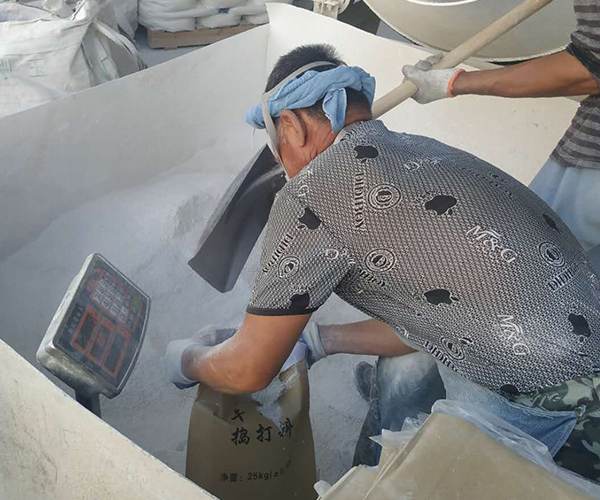Contact: Manager Qu
Phone: +86 15330915520
Contact: Manager Liu
Phone: +86 13464791403
Address: Dashiqiao City, Liaoning Province
The raw materials used to produce Liaoning magnesia-chrome bricks include natural raw materials, synthetic raw materials, industrial chromium oxide and alumina. Natural raw materials such as various grades of sintered magnesia, ordinary chrome ore and chrome concentrate with low impurity content. The synthetic raw material is a co-sintered material obtained by finely grinding, mixing, compacting, and then calcining light-burned material of relatively pure magnesite and chromium concentrate;
Fused magnesia chromium material (also called molten magnesia chromium material) made by electrofusion of magnesite and chromium ore;
There are also fused magnesia, fused magnesia aluminum spinel and so on. Synthetic materials are generally raw materials with low impurity content. The above-mentioned raw materials can be made into various magnesia-chrome bricks with different combinations and formulas.
Since the permeability of the liquid phase between different grains is lower than that between the same grains, when the liquid content is fixed, the appearance of the second solid phase will increase the solid-solid contact, which can increase the high temperature of the brick. strength. In the production of electric fused magnesia chrome bricks or semi-recombined magnesia chrome bricks, pre-synthesized magnesia chrome sand is added as a raw material, thereby increasing the content of the second solid phase and increasing the high temperature strength of the brick.

It can be seen that the high-temperature strength changes of magnesia-chromium refractories of different processes are as follows: silicate combined with magnesia-chromium refractories<directly combined with magnesia-chromium refractories<semi-recombined magnesia-chromium refractories<melted and combined with magnesium-chromium refractories. Since the high temperature flexural strength mainly represents the combination of the various minerals in the brick, this shows that the fused and combined magnesia chrome brick has the highest bonding strength, so its erosion resistance at high temperatures.
Since the permeability of the liquid phase between different grains is lower than that between the same grains, when the liquid content is fixed, the appearance of the second solid phase will increase the solid-solid contact, which can increase the high temperature of the brick. strength. In the production of electric fused magnesia chrome bricks or semi-recombined magnesia chrome bricks, pre-synthesized magnesia chrome sand is added as a raw material, thereby increasing the content of the second solid phase and increasing the high temperature strength of the brick.
Compare the thermal shock stability of various magnesia-chrome bricks by using the residual strength percentage of 1100℃ and air cooling for one time. Among the magnesia-chrome bricks produced by different production processes, the thermal shock stability of ordinary magnesia-chrome bricks is the most. Directly bonded magnesia chrome bricks are the next best, and fused and combined magnesia chrome bricks are worst.
Chrome ore is the main raw material for the production of magnesia-chrome bricks. Due to different sources, the content of main impurities varies. In addition, the amount of chrome ore added will also affect the performance of protactinium chrome bricks. This section will mainly clarify the influence of the source and amount of chromium ore on the performance of directly bonded magnesia-chrome bricks.
1. The influence of chrome ore particle size
Domestically produced high chromium ore w (Cr2O3)>53%), although the iron oxide content is much lower than South African chromium ore, the silica content is higher. For this reason, the influence of the particle size composition of domestic high chromium ore on the performance of directly bonded magnesia chrome bricks is mainly studied. The compressive strength of the products increases with the decrease of the critical particle size of chromium ore. The high temperature flexural strength (1400℃, 0.5h) ) Decreases as the critical particle size of chrome ore decreases. When the critical particle size of chrome ore is 1.5mm, the thermal shock stability peaks.
Magnesia chrome bricks are alkaline refractory products containing 55% to 80% MgO and 8% to 20% Cr2O3, and are composed of periclase, composite spinel and a small amount of silicate phase. Composite spinel includes MgAl2O4, MgFe2O4, MgCr2O4, FeAl2O4 and other spinel solid solutions.
Magnesia chrome bricks have developed rapidly after the 1960s due to the increase in raw material purity and firing temperature. At present, magnesia chrome bricks can be divided into ordinary bricks, direct bonded bricks, co-fired bricks, recombined bricks and Cast bricks, etc.